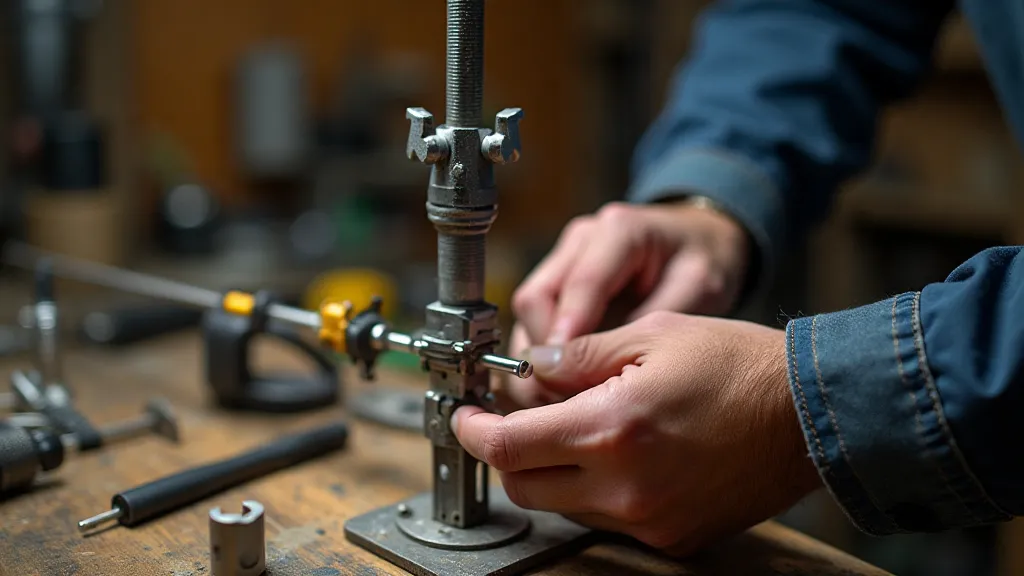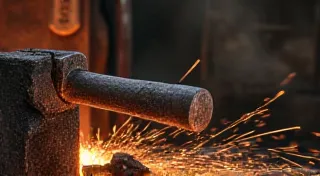Echoes in the Void: VHF Antenna Design for Distant Horizons
There’s a peculiar kind of resonance that connects the faint signals bouncing off distant horizons to the gentle wheeze of an antique accordion. Both are echoes, whispers from the past, painstakingly crafted to transport us somewhere else – a place of longing, connection, and the possibility of something more. My grandfather, a man of few words but immense skill, played an accordion – a Hohner Classic, its bellows worn smooth by years of melodies echoing through our small town. He’s gone now, but the feel of that instrument, the effort required to coax music from it, serves as a constant reminder of the dedication and craftsmanship that's equally vital in ham radio, particularly when pushing the boundaries of VHF communication.
The allure of VHF – Very High Frequency (typically 144-148 MHz for amateur bands) – lies in its challenge. Unlike the more forgiving HF bands, VHF propagation is heavily reliant on sporadic-E (Es) layers, ducting, and occasional tropo scatter events. These conditions are fleeting, unpredictable, and demand a dedicated approach to antenna design and operation. It’s less about brute force and more about finesse, precision, and a deep understanding of how radio waves behave.

Understanding the VHF Landscape
Before diving into specific antenna designs, it's crucial to grasp the propagation characteristics of VHF. These bands primarily rely on tropospheric ducting, where layers of warm and cool air bend radio waves around the Earth. Sporadic-E is a more sporadic event – a layer of ionization in the lower ionosphere that can occasionally reflect VHF signals over hundreds of miles. Tropo scatter involves reflecting signals off atmospheric turbulence, allowing for communication beyond the line of sight. Each of these phenomena has its own nuances, influencing the optimal antenna type and orientation.
The challenge is compounded by the fact that VHF signals are heavily attenuated by atmospheric absorption. This means that maximizing gain and minimizing losses are paramount. Cheap, poorly constructed antennas will simply not perform. The equivalent of a badly tuned accordion, producing a muffled, lifeless sound.
Ground Plane Antennas: A Simple Starting Point
For beginners eager to dip their toes into the VHF world, a simple ground plane antenna can be a surprisingly effective solution. This design consists of a radiating element (typically a dipole or a folded dipole) surrounded by several (usually 3-6) radiating wires arranged vertically. These radiating wires act as a reflective surface, concentrating the signal forward. Construction is straightforward; even someone with limited experience can build a functional ground plane antenna with readily available materials – copper wire, PVC pipe, and some basic soldering skills.
The key here is precision. The length of the radiating element and the ground radials must be carefully calculated based on the desired frequency. Sloppy cuts and imprecise soldering will degrade performance. Consider the maker of an antique accordion; the careful shaping of each reed, the precise placement of every button – it’s that level of detail that separates a good instrument from a great one.
Yagi-Uda Antennas: The Search for Gain
For those seeking to significantly boost signal strength, the Yagi-Uda antenna is the go-to choice. This directional antenna comprises a driven element (typically a dipole), a reflector element, and several directors. The reflector, slightly longer than the driven element, reflects signals towards the directors. The directors, progressively shorter than the driven element, focus the signal in a specific direction. A well-designed Yagi can provide significant gain – often 10-20 dB – dramatically extending communication range.
Building a Yagi is considerably more complex than constructing a ground plane or a dipole. Accurate measurements and precise alignment of the elements are critical. The spacing between the elements is also crucial for optimal performance. The construction process demands patience and attention to detail. Think of a restorer meticulously cleaning and repairing an antique accordion; each piece carefully inspected, every joint adjusted with precision. Similarly, a Yagi antenna demands the same level of commitment to quality. Achieving the desired effect often requires understanding how the antenna interacts with the broader electromagnetic environment—a consideration that can benefit from a deeper look at harmonic behavior, similar to understanding the subtle nuances of wire antenna construction to control what’s produced. This understanding could further be explored in Chromatic Resonance: Wire Antenna Construction and the Palette of Frequency.

Optimizing VHF Antenna Performance: Beyond Construction
Building a VHF antenna is only half the battle. Antenna placement and orientation are equally important. Elevation is key – the higher the antenna, the fewer obstacles there are to obstruct the signal. Clear line of sight to the intended contact is ideal, but atmospheric conditions can often bend signals around obstacles.
SWR (Standing Wave Ratio) is a critical parameter that indicates the efficiency of the antenna system. A low SWR (ideally below 1.5:1) indicates that the antenna is well-matched to the transceiver. A high SWR indicates a mismatch, resulting in reflected power and reduced efficiency. Using an antenna analyzer is essential for tuning the antenna and minimizing SWR. A poorly tuned antenna is analogous to an accordion with out-of-tune reeds, producing a discordant and unpleasant sound.
Wire Antennas for VHF: Simplicity and Ingenuity
While directional antennas like Yagis offer substantial gain, wire antennas can be surprisingly effective for VHF, particularly when space is limited or when operating in a portable environment. A simple folded dipole can provide decent performance, especially when elevated. Long-wire antennas, carefully tuned, can also provide surprisingly good results. The key is to experiment with different lengths and configurations to find what works best for your location and operating conditions. The ingenuity required to wring performance from simple materials echoes the craftsmanship needed to maintain a vintage instrument. When dealing with various wire configurations and lengths, it’s also vital to consider how the antenna radiates, particularly in urban environments, where minimizing unwanted emissions is crucial. A deep dive into strategies for achieving this can be found in The Silent Sentinel: Low-Profile Antenna Designs for Limited Spaces.
Consider the challenges faced by early radio enthusiasts, who built antennas from whatever materials they could find – wire, coat hangers, even pieces of scrap metal. Their resourcefulness and ingenuity are a testament to the enduring appeal of amateur radio. Building your own VHF antenna, even a simple one, connects you to that same spirit of innovation and experimentation.

Beyond the Basics: Adapting to Urban Environments
Operating VHF in urban settings presents unique challenges. Building density, interference, and limited space necessitate creative antenna solutions. Stealth antennas, compact designs, and optimized placement become critical. Furthermore, understanding the propagation characteristics specific to urban environments – including multipath interference and reflections from buildings – is paramount. Experimentation and adaptation are key to overcoming these obstacles and establishing reliable VHF communication.
The Quiet Satisfaction of Self-Reliance
Building your own VHF antenna isn't just about improving your signal strength; it's about gaining a deeper understanding of radio principles and a greater appreciation for the craft of antenna design. It’s about the quiet satisfaction of self-reliance, of creating something with your own hands, and of pushing the boundaries of what’s possible. Like the dedicated accordion restorer, who breathes new life into a treasured heirloom, you’re not just building an antenna; you’re connecting to a tradition of innovation, perseverance, and the endless pursuit of distant horizons – echoes in the void, waiting to be heard. As you strive for efficient and reliable communication, remember that meticulous attention to detail and a deep understanding of the underlying principles are essential – qualities that resonate across both the art of antenna design and the timeless craft of preserving a vintage musical instrument.





